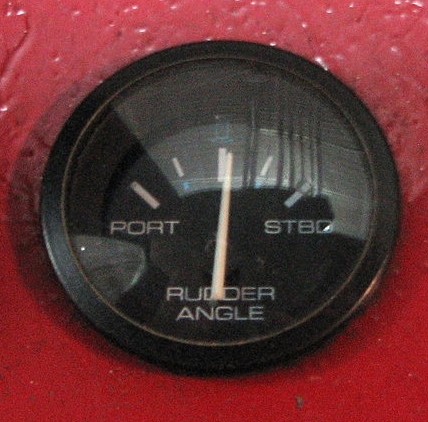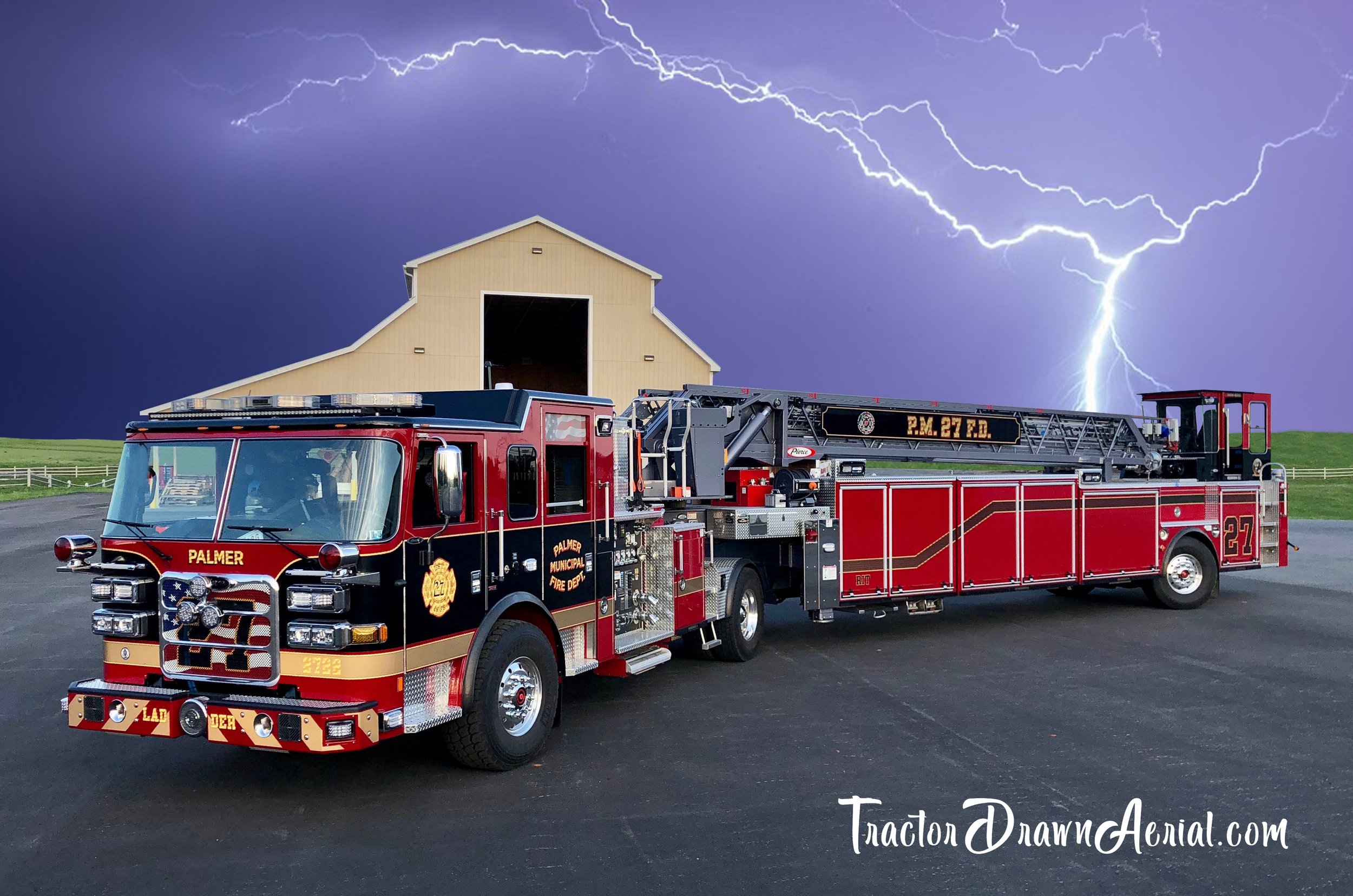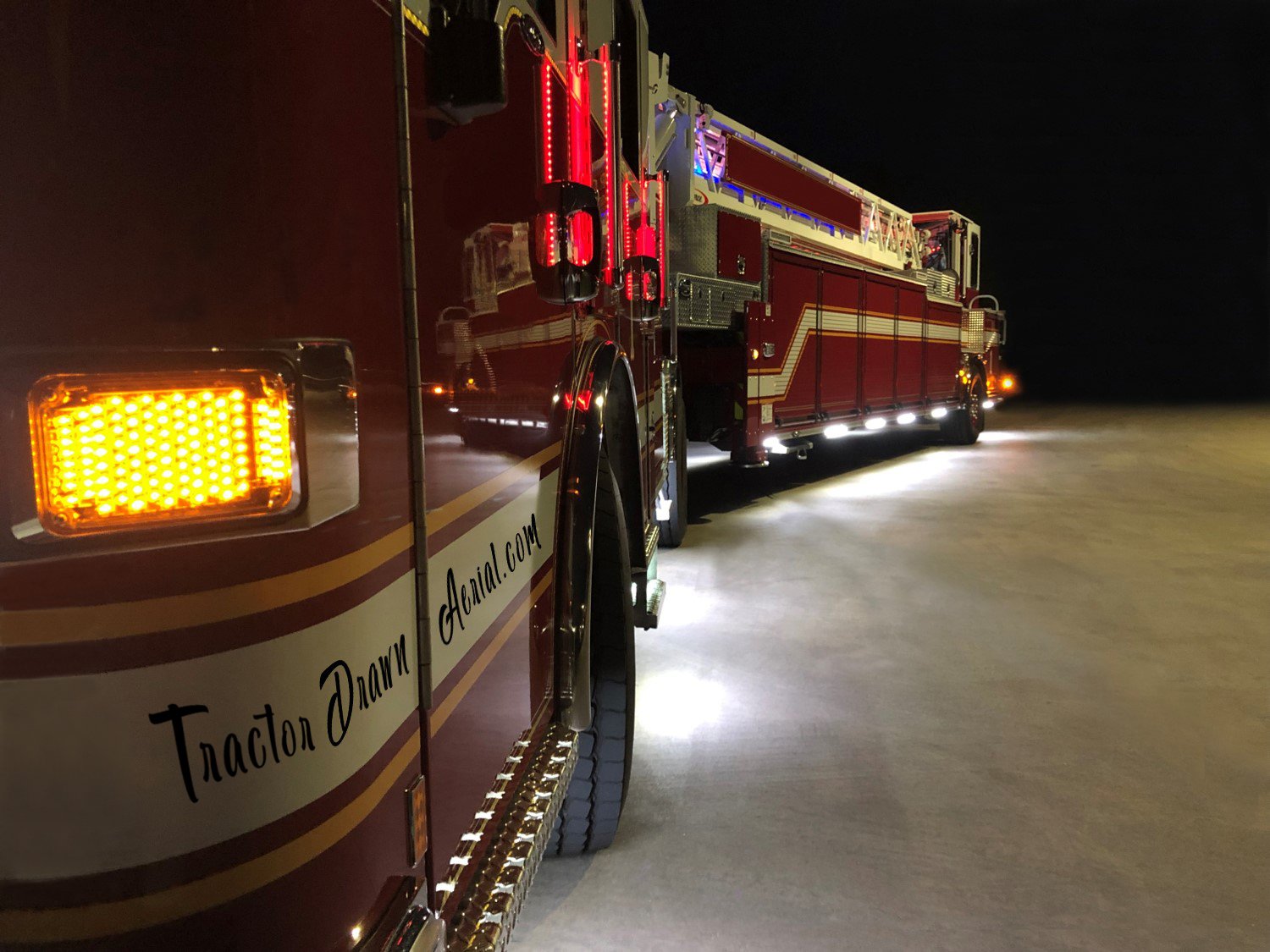rudder gauge
Click to enlarge
The rudder gauge is generally located on the dash or above the tiller operator in the tiller cab. It is an instrument that allows the tiller operator to view the approximate angle of the tiller axle wheels. The tiller operator is unable to physically see the position of the tiller wheels when sitting in the tiller cab. If the tiller wheels are turned to the left the rudder indicator dial will also be turned to the left.
Types of rudder gauges
There are different types of rudder gauges in use today, each having different characteristics, but all accomplishing the same function. On the right are two different rudder gauges that use nautical nomenclature to describe the position of the tiller wheels. Port would indicate that the wheels are turned to the left and starboard would indicate that the wheels are turned to the right. One has the angle indicator facing up and the other has it facing down. (Click to enlarge)
example B:
Click to enlarge
This example shows a rudder gauge which uses the letters “L”, “C”, and “R”, to indicate if the wheels are left, center, or right.
Example C:
Click to enlarge
This rudder gauge is firefighter proof; it uses a picture of an axle to indicate the position of the tiller wheels.
THE proper use of the RUDDER GAUGE
The proper use of the rudder gauge is when the apparatus is stopped and the tiller operator is not sure of the position of the tiller wheels. By looking at the rudder gauge the tiller operator is able to see the position of the wheels and realign them to the center position before the apparatus moves forward. Let’s say for example the tiller operator climbs up into the tiller seat and can’t remember what position the tiller wheels were left in. Or another example is when the apparatus is coming out of a corner and comes to a complete stop, while at the same time the tiller operator was unable to straighten out the tiller wheels. The tiller operator may not know the exact position of the wheels because they were in the middle of turning the steering wheel when the apparatus came to a stop. If the wheels are not in the straight position when apparatus starts to move forward, the tractor could pull the trailer out past the in-line position and potentially hit an object or cause an accident. When used properly the rudder gauge can be an effective tool.
Good discipline should be employed by the tiller operator not to use the rudder gauge when the apparatus is moving forward.
A new tiller operator may be tempted to look at the rudder gauge when steering out of a corner to see if the tiller wheels are back to neutral. When the tiller operator is looking at the rudder gauge, they are no longer looking ahead and picking up the spatial cues and indicators that are required for maneuvering. The tiller operator has no control over how fast the apparatus is traveling and the speed at which they come out of the corner can be relatively quick. Looking at the rudder gauge can dramatically affect the tiller operator’s reaction time thus cutting down on the amount of time the tiller operator has to make decisions.
When moving forward, the rudder gauge is not an accurate indicator of the tiller wheel's position for the following reasons:
- Most rudder gauges respond slowly to steering input and lag behind the actual tiller operator's steering input.
- Rudder gauges can become misaligned over time due to wear and tear or hazards in the road such as potholes, bumps, curbs, etc.
The rudder gauge should not be used as an exact instrument to determine tiller wheel position when the apparatus is moving forward.














